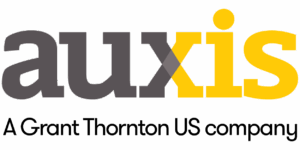Today’s competitive business landscape calls for aggressive and sustainable ways to cut internal costs without compromising the service levels of the organization. One area that has been prone to drive cost-cutting initiatives, and will continue to do so going forward is the back office through the establishment of shared services and outsourcing models.
Some of the well-known benefits of shared services and outsourcing include not only cost savings but productivity efficiencies, scalability, better controls and greater strategic focus, just to name a few.
But, as with any other business decision, building a comprehensive and reliable business case is critical to obtain alignment and approval from the executive team before moving into implementation. Labor savings estimates are not enough. A winning business case requires having a clear understanding of the level of investment required, the payback period, and the ROI expected from this initiative.
This article will explore the 7 key components required to develop a strong business case for shared services and outsourcing:
1. Vision & Strategy
Before thinking about specific numbers and financial impact, organizations need to be clear on what the strategic drivers for shared services or outsourcing are. Getting executives aligned on the “why” is critical before moving to the “what” and “how.”
Defining your company’s strategic guardrails will be key for this exercise. What does your organization define as the core and non-core functions of the business? How much is the organization willing to centralize outside the “field”? How open is the organization to outsourcing and in which areas?
By having these answers clear, you will be able to develop a clear Strategic Vision and high-level Future-State Operating Model that identifies the mix of outsourcing versus in-house that works for your company.
2. Functional & Geographic Scope
To identify the functions in scope for shared services and outsourcing, you will need to perform a baseline assessment of your current operations to understand operating practices, key business requirements, risks and potential barriers.

With this assessment that is usually done through interviews and process walkthroughs with current owners and subject matter experts, you should be able to develop a standard process taxonomy with the list of processes for potential consideration.
Employees within the current locations in scope could complete an activity survey to effectively capture the time spent on these activities throughout the organization, using the process taxonomy as the framework.
In the end, you will need to quantify or estimate the number of FTEs (Full Time Employees) per process, and once you select the processes in scope, this will give you an estimate of the size of the to-be organization.
3. Location Selection
It involves a comprehensive location analysis assessment using a structured, multi-tiered approach to evaluate the potential locations on a uniform set of criteria to reach an educated decision for selecting the SSC or outsourcing location(s). Evaluation criteria typically include labor costs, talent availability, tax and government incentives, political and economic stability, among other key success factors such as the specific footprint of your organization.
4. Labor Arbitrage Savings & Productivity Efficiencies
Your labor arbitrage savings are the difference between the current cost of the personnel that will be migrated under a shared services or outsourcing model, and the to-be cost in the selected location. One important consideration is that you should make sure that your cost estimates are fully loaded, including not only salary but all the benefits, taxes and overhead costs associated with those employees (e.g., office space, computer, parking, etc.).

Another element to keep in mind is that your current organizational structure probably has a lower span of control than what you can get under a centralized model, this means that when designing your to-be organizational structure you should be able to decrease the number of Directors, Managers or Supervisors versus the number of Analysts/Staff, and get additional savings by just re-leveling the organization.
In addition to saving opportunities you can get with organizational re-leveling, you could also add to your business case an assumption for productivity efficiencies. As a conservative estimate, without implementing significant process improvements or automation, just by centralizing, you could get ~10% productivity efficiencies that you may want to incorporate as part of your savings. You can include this benefit either from the beginning or after certain months of the migration. It depends on how conservative you want your business case to be, and how inefficient you think your current operation is.
5. Implementation Roadmap
Once the strategy is clear, the location is selected, and the functions and geographies in scope are chosen, you have a pretty good idea of what needs to be done, and it’s time to lay out a detailed implementation roadmap.

Why is this component important to your business case?
Because it will provide you with two things: Timing and Cost of Execution. If you are going to get external help from a consulting or outsourcing provider to help you with the documentation, design and migration, the activities and timeline of your implementation plan will determine the level of effort and the professional fees.
Another important input for the business case is the order in which you decide to migrate the different locations in scope. For example, if the locations in scope are United States, Canada, Colombia, and Chile, each of those locations will provide you a portion of your total labor savings estimate. You may decide to start with migrating the country that provides the highest labor arbitrage (e.g., United States), which would accelerate your savings realization and therefore impact your business case.
6. Initial Investment
You will need to identify and quantify the different one-time costs associated with your initiative.

These costs typically include:
- Consulting & Professional Fees
- Travel Costs
- Severance & Retention Bonus
- Training Overlap Cost (double payroll)
- Hardware & Enabling Technologies
- Office Leasehold Improvements
Keep in mind that if you decide to go with an outsourcing model rather than a captive model, some of these costs (e.g., leasehold improvements and hardware & enabling technologies) are not required as they’re typically included as part of your overall outsourcing fee.
7. Tax Considerations

Last but not least, tax considerations can have a huge impact on your business case, and eat a big portion of your savings estimates. One of the main tax issues with locating a Shared Service is often withholding taxes (WHT). The impact of WHT will not only depend on where the Shared Services is located but also on the invoice flows, so it’s important to get it right.
The Corporate Income Tax percentage will also vary depending on the selected location and the free trade zone options available in each country. Getting your tax experts involved as part of your location analysis and design process is crucial.
Time to Calculate your Financial Impact
If you can get the 7 components above right, you should be able to develop a very realistic business case for your shared services or outsourcing initiative. With all these inputs available, you will project your future cash inflows (savings estimates) and cash outflows (costs reviewed in component #6) to obtain your discounted cash flow (DCF) and expected NPV. You will also be able to get other key financial indicators such as IRR and Payback Period to make an educated executive decision on moving forward or not with this initiative.
Contact us today to help your organization frame your strategy and business case for shared services and outsourcing.

